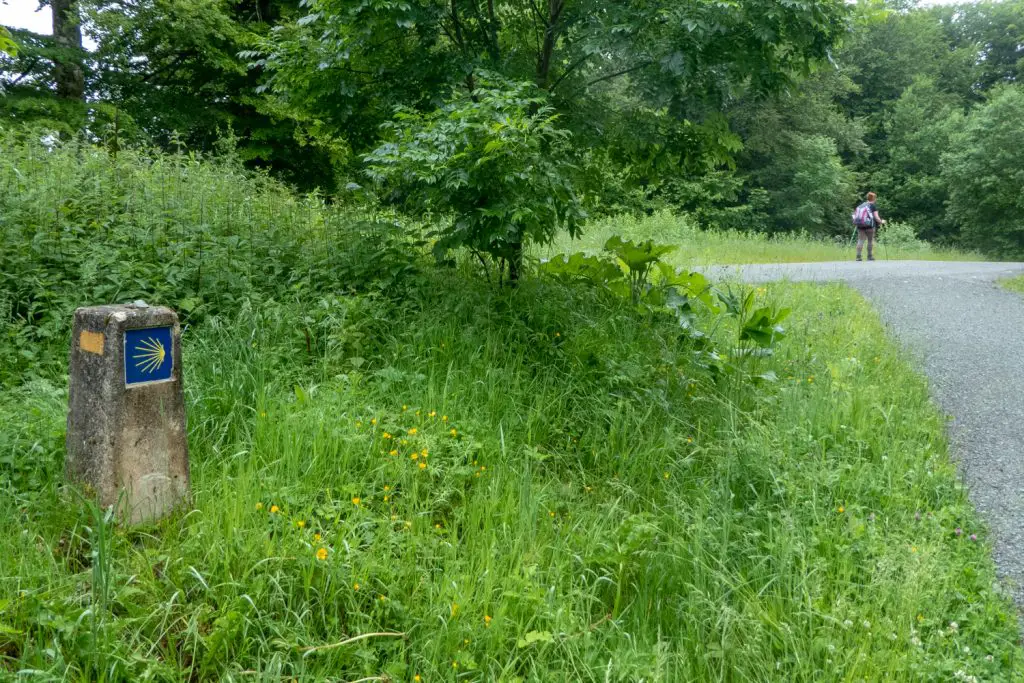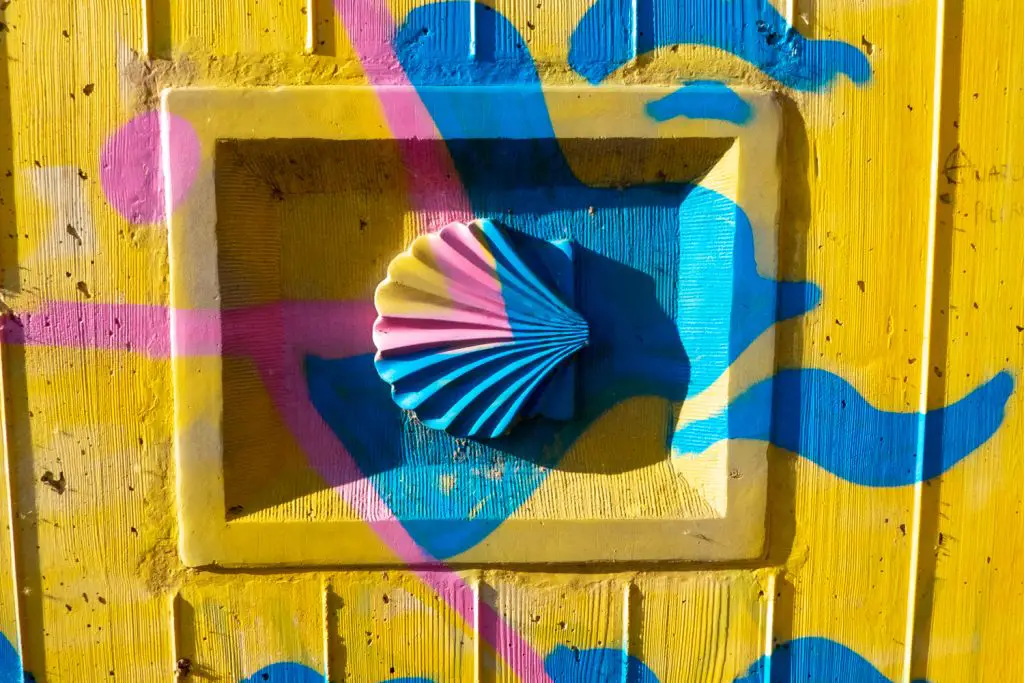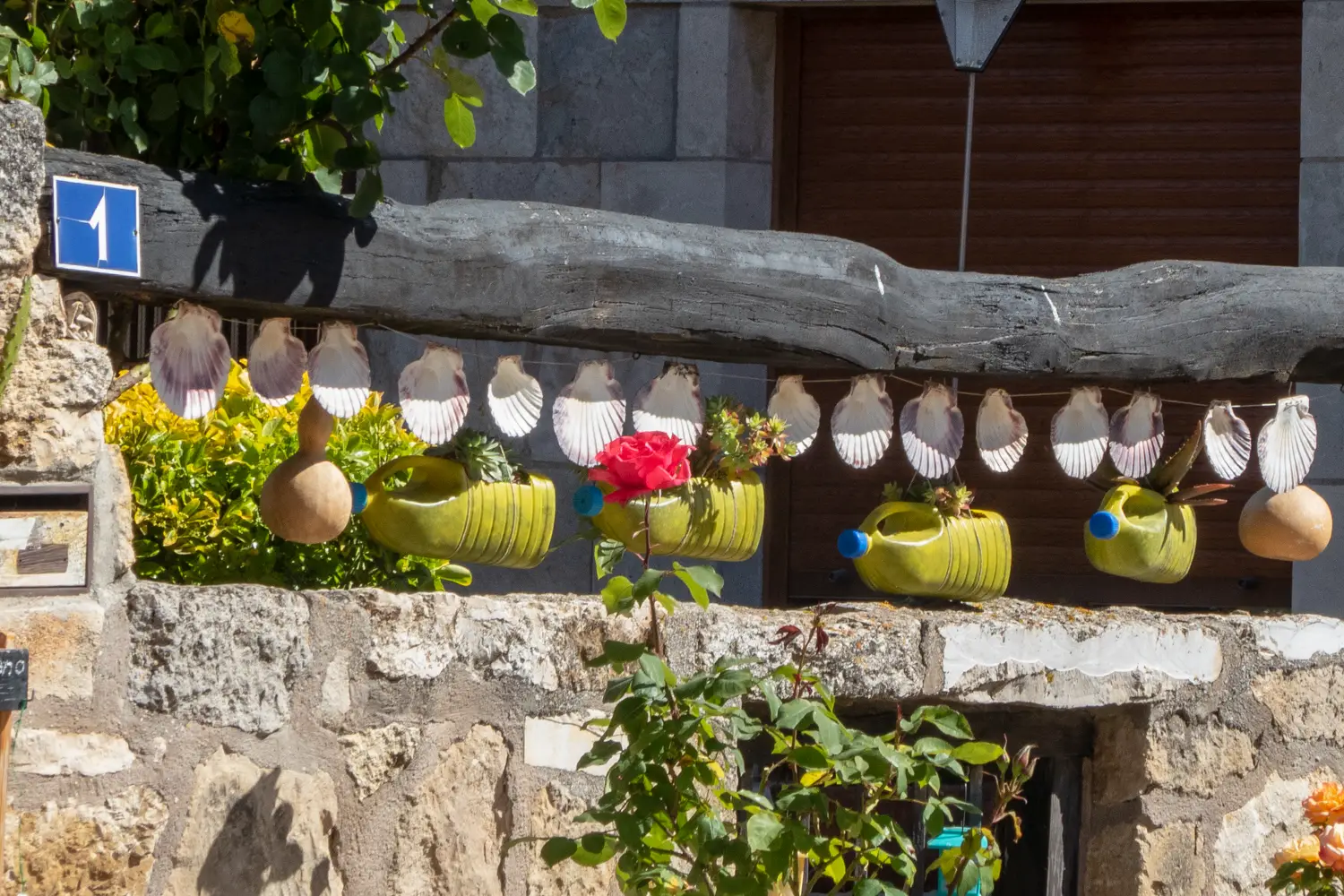One of the first things that I noticed when I walked the French Way of the Camino de Santiago was that there were scallop shell symbols everywhere. Found on waymarkers, wall signs, the sides of churches and even hanging from people’s backpacks, I couldn’t help but wonder what the story behind the Camino shell symbol was.
Since walking my first Camino, I have learnt lots about the Camino shell, even getting it tattooed on my arm! For those wanting to embark on this epic pilgrimage, this post will tell you all need to know about the Camino shell, including the history of this iconic symbol, its importance to pilgrims and even how to make your own. After all, are you even walking the Way of St. James if you don’t have a scallop shell hanging from your backpack?!
Read more: (opens in new tab)
- Camino de Santiago Packing List for Women
- Cool Things to do in Santiago de Compostela
- Hiking El Camino Tips
A Guide to the Camino de Santiago Shell Symbol
A Brief History of the Camino de Santiago
Known in English as the Way of Saint James, the Camino de Santiago is an ancient pilgrimage route which finishes at the cathedral in Santiago de Compostela, in northwestern Spain. There are various established routes which you can take, all of differing durations.
Although traditionally walked as a religious pilgrimage, in modern times, people walk the Camino for a whole host of reasons. if you walk the last 100km of a determined Camino route and finish at Santiago de Compostela Cathedral, you’ll qualify for a Compostela certificate at the end of your journey.

El Camino Scallop Shell Legends
There are a number of different theories about how the scallop shell (also known in Spanish as vieira) first came to be associated with the Camino de Santiago. The ones that you tend to hear, depend largely on who you ask. However, they are all magic tales.
Version 1:
This is the story I was told during my free walking tour around the city of Santiago de Compostela. According to this legend, the scallop shell and its links with El Camino can be traced back millennia, to when the remains of St. James (after whom the Camino is named) were transported to the Spanish peninsula. During the journey, there was a terrible storm and the boat carrying St. James was destroyed. The disciple was washed ashore completely unblemished, covered in scallop shells.
Version 2:
The second version of this story largely follows the plot line of the first, however, in this instance, it was not the remains of St. James that were washed up covered in scallop shells but a knight’s horse. It had fallen from the boat during the gruelling sea journey from Jerusalem to Galicia.
Version 3:
Some believe that the scallop shell has become the symbol of the Camino because the apostle St. James once saved a knight who was covered in scallop shells.
Version 4:
One myth tells of a wedding taking place on the beach where the bride was on horseback. After a ship passed by and startled the horse, it bolted for the ocean, taking the bride with it. The two of them later emerged, completely unharmed but covered in clamshells. The bride remained strapped into the saddle.
While it would be easy to dismiss these Camino myths as nothing more, that could be a bit hasty. Some have theorised that the links between St. James and the clamshell go back even further than first thought.
In German, scallops are called ’jakobsmuscheln’, literally translating to James mussels. In French, the scallop is called ‘coquille Saint Jacques’, further strengthening the link between the apostle, the scallop shell and the Camino de Santiago.
It has been proposed that the Camino and its links with the scallop shell could even predate Saint James and Christianity. Some scholars believe that the Camino de Santiago would have once been undertaken as a fertility pilgrimage. Therefore, it has been suggested that the shell was perhaps a symbol of fertility back in Pagan times.
Historic Importance of the Camino Shell
It is believed that the lines of the Camino shell represent all of the Camino routes which lead to Santiago de Compostela. These are:
- Camino Frances
- Camino Portugués
- Camino Portugues Coastal
- Camino Primitivo
- Camino del Norte
- Camino Ingles
- Camino Finisterre
- Via de la Plata
- Le Puy Camino
Read this post for more about the different Camino routes.

Many medieval pilgrims would have worn a scallop shell attached to their hat or bag while on their journey to Santiago de Compostela. More than just a visual symbol that they were taking on the Camino, these scallop shells also had practical uses along the trail.
They were often used as bowls to eat and drink from throughout the journey and dictated the amount of food that could be donated to you by a church. In fact, if you’re following tradition, you are meant to use a scallop shell when you fill up from the famous wine fountain in Monasterio de Irache.
El Peregrino Shells Today
As legends about shells and their association with the Camino de Santiago spread, they were adopted as the official symbol of the trail. They appear on countless waymarkers pointing towards Santiago and are traditionally yellow set against a blue background.
Donning a scallop shell on your backpack has also become the way to indicate that you are walking the trail. Although not everybody walks the pilgrimage for religious reasons, the backpack shell trend has surpassed its spiritual and religious origins and is now worn by many a pilgrim, even those walking Camino purely for leisure purposes.
Owing to the popularity of backpack shells, these are available at many shops en route and are sold as tourist souvenirs along the Camino routes. It is believed that pilgrim shells have been sold in the areas around Santiago de Compostela Cathedral since the Middle Ages! If you’re planning to walk the Camino de Santiago and want to don your very own shell, keep reading to find out how to make one!

How to Make a Camino Backpack Shell For Your Journey
Scallop shells are on sale everywhere along the Way of St. James. However, you can easily make your own to hang on your backpack before you travel. If you don’t already have a scallop shell, you can buy one online. Alternatively, head to your nearest beach and start looking!
You’ll need the following things to make your very own backpack shell.
- Scallop shell
- Duct tape
- Drill and small drill bit
- Cord (leather, wool, etc.)
Firstly, reinforce the edges of the shell with duct tape. When you drill something as fragile as a shell, you risk it cracking. The duct tape will make it more resilient to any splits or breaks during the drilling process.
Mark out where you would like your two holes and then drill. Then simply threat the cord through and tie it to your backpack. If you are checking your luggage, I’d recommend affixing it once you’ve arrived at your starting destination so that it doesn’t get damaged in transit. Buen Camino!
What is your favourite story about the Camino shell? Let me know in the comments!


